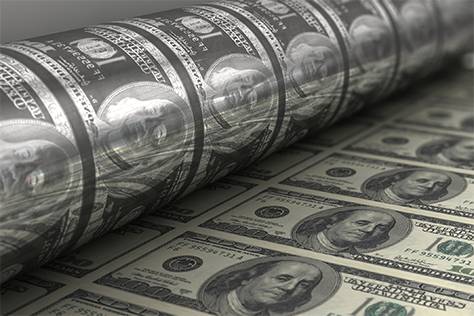Dollar Surge In the fast-paced world of global finance, the currency markets are often a reflection of the prevailing economic conditions. Recently, the dollar has been making headlines in European trade, surging against a basket of major rivals and reaching an 11-month high. What is fueling this impressive ascent, and what does it mean for the broader financial landscape? In this article, we will delve into the factors behind the dollar’s remarkable rise and explore the implications for investors and the economy at large.
The Dollar Index Hits New Heights
The dollar index, a measure of the U.S. dollar’s strength against a group of major currencies, has been on an upward trajectory. It recently rose by 0.2% to reach 107.21, marking its highest level since November 2022. This surge follows a 0.8% gain on the previous trading day, fueled by robust data coming out of the United States.
US Treasury Yields on the Rise
One of the key drivers of the dollar’s strength is the surge in U.S. Treasury yields. The yield on the benchmark 10-year U.S. Treasury note climbed by 0.5%, reaching a 16-year peak at 4.743%. This upward movement in yields has attracted investments in the dollar, as higher yields make U.S. assets more appealing to investors.
The recent avoidance of another partial government shutdown in the United States has contributed to this trend. The resolution of fiscal issues has reduced demand for U.S. bonds, pushing yields higher.
Dollar Surge Strong Economic Data Boosts Confidence
In addition to rising yields, strong economic data from the United States has played a pivotal role in bolstering the dollar. Recent reports on the U.S. services sector indicate that it is steadily approaching a recovery phase as demand improves. This resilience and adaptability of the U.S. economy, even in the face of higher interest rates, have instilled confidence among investors.
Furthermore, these positive economic indicators have heightened expectations of another 0.25% interest rate hike by the Federal Reserve. Such a move could take place at either the October or December policy meetings, as the central bank aims to maintain a balance between economic growth and inflation control.
Dollar Surge Federal Reserve’s Hawkish Stance
The Federal Reserve’s stance on interest rates has also contributed to the dollar’s surge. Federal Reserve officials, including Michelle Bowman and Loretta Mister, have made hawkish remarks regarding the need for further rate hikes.
Michelle Bowman stated that it is likely appropriate for another interest rate hike before maintaining rates at high levels for an extended period. Meanwhile, Cleveland Fed President Loretta Mister emphasized that the Fed may need to raise interest rates once more this year to bring inflation back to its target of 2%.
Dollar Surge Market Expectations
Market expectations are increasingly aligning with the possibility of additional interest rate hikes. Currently, the pricing for a 0.25% interest rate hike in November stands at 26%, while the pricing for a December rate hike stands at 45%. These figures suggest that investors are bracing for further tightening of monetary policy in the coming months.
Looking Ahead
To gain a clearer perspective on the future trajectory of U.S. monetary policy, market participants are eagerly awaiting new data on job opportunities. The release of this data is expected to reveal the availability of 8.81 million jobs in August, providing valuable insights into the labor market’s health and the broader economic outlook.
In conclusion, the dollar’s recent surge in European trade is a reflection of various factors, including rising U.S. Treasury yields, strong economic data, and the hawkish stance of the Federal Reserve. Investors and financial markets are closely monitoring these developments, as they have the potential to shape the direction of global currencies and impact investment strategies. As the dollar continues its ascent, staying informed and adaptable is key for anyone navigating the dynamic world of international finance.
FAQs
1. What is the dollar index, and why is it important for traders?
The dollar index is a measure of the U.S. dollar’s strength relative to other major currencies. It is crucial for traders and investors as it provides insights into the dollar’s performance in international markets, impacting trade, investments, and economic policies.
2. How do rising U.S. Treasury yields affect the economy?
Rising U.S. Treasury yields can attract investments into U.S. assets, including government bonds. However, they can also increase borrowing costs for businesses and consumers, potentially affecting economic growth.
3. Why are strong economic data and the Federal Reserve’s stance significant for the dollar’s strength?
Positive economic data and a hawkish stance by the Federal Reserve indicate a robust economy and potential interest rate hikes. This attracts investors, driving up demand for the dollar.
4. What does a higher dollar mean for international trade?
A stronger dollar can make U.S. exports more expensive, potentially impacting international trade balances. It can also affect the competitiveness of U.S. companies in global markets.
5. How can investors prepare for currency market fluctuations?
Investors can prepare for currency market fluctuations by diversifying their portfolios, staying informed about economic indicators, and considering risk management strategies such as hedging. Additionally, seeking advice from financial experts can be beneficial in navigating currency markets.

